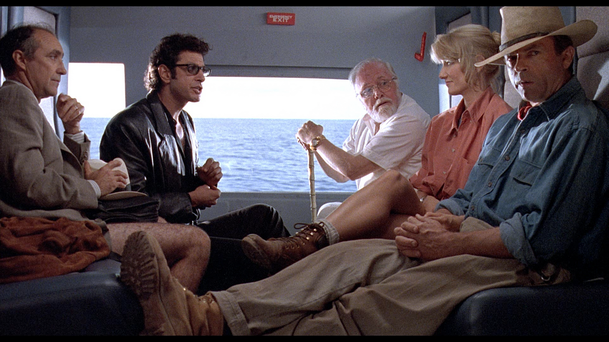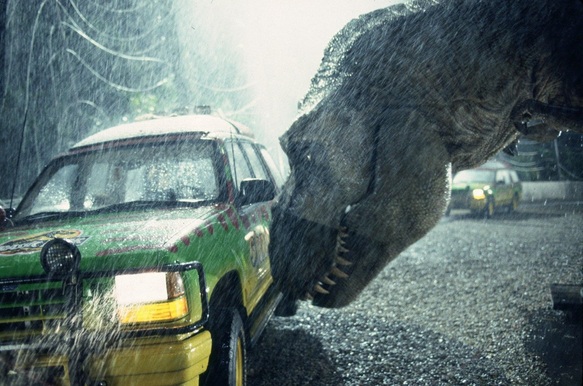When it comes to film adaptations of novels, 99 times out of 100 the source material will be better. The film version is never quite able to capture the nuances, the inner thoughts, the rich imagery and description that the novel contains.
Jurassic Park is the exception.
I absolutely love Michael Crichton’s original book. It’s terrifying, fantastical, and full of colorful characters. But what makes Steven Spielberg’s Jurassic Park so great is not the impeccably-cast band of misfits or the seemingly endless stream of Jeff Goldblum-isms. Jurassic Park is great for how perfectly it captures the sheer wonderment and horror of man walking among dinosaurs and how much it amplifies those feelings.
When Dr. Grant and Dr. Satler first venture out into the interior of the island, they come face to face with something they never thought they would see with their own two eyes: a herd of living, breathing brachiosaurs. They’re barely able to stand, mouths agape, literally speechless at what they’re witnessing. These ancient, almost mythic species that dominated the planet tens and hundreds of millions of years ago, species they came to know and love through their fossilized, cold remains, are standing, walking, reaching up to eat the leaves off of trees. This is a monumental moment for them and for the audience. The fantastic special effects, the great acting, the cinematography, the irreplaceable John Williams score—all of it combines to create a sense of complete awestruck wonder. It’s then that Dr. Satler and Dr. Grant jump on to Hammond’s fantastical idea of a dinosaur theme park, and we do too. It’s moments like these that dominate the first half of the movie, moments that leave the audience in wonderment.
And then things take a turn for the terrifying, and Jurassic Park turns from a wonder-filled family movie into a bloodbath. The first of these scenes, the infamous goat scene, plays like something straight from a horror movie. The absence of any music only enhances the palpable sense of terror. The scene is a master class in building tension. We don’t see the monster itself until late in the scene, and before that we don’t even catch glimpses of it. All we know are what the characters are experiencing around them. The goat is gone; what could have possibly come in that quickly, eaten it whole, and disappeared? The water in the glasses starts quietly rippling, signaling that the ground itself is shaking with each step; just how massive is this thing? And then we see it, the 40-foot tall bipedal behemoth that is the T-rex, lumbering over the tiny cars and the scared little people it could care less about. Everything we think we know about these creatures, all of the wonderment and illusion and bliss—all of it is shattered in this scene. And from here on out, Jurassic Park is about survival and just trying to make it out alive. Enterprising scientist/philanthropist/billionaire/playboys take note: never, ever try something like this. Ever.
The film is wonderfully 90s in its aesthetic, from the Jeep Grand Cherokees to the downright stupid computer jargon that spews out of Samuel L. Jackson’s mouth. Now, it feels a little dated. But overall, the film holds up surprisingly well, and this is mostly thanks to the fantastic special effects. Those were some damn convincing dinosaurs back in 1993, and even today they’re still damn convincing. Watching Jurassic Park even today, in our post-Lord of the Rings CGI-driven blockbuster-centric world, one doesn’t feel the need to go back and update the dinosaur effects. They work, to terrifying effect.
The brilliance of Jurassic Park lies in its duality. It is at once a wondrous, fantastical family movie and a paralyzing, terrifying horror movie. It inspires feelings of awe and feelings of fear, feelings of astonishment and feelings of paralyzingly real horror. That’s why Jurassic Park the movie is better than Jurassic Park the book: because it translates Michael Crichton’s direct, powerful prose into real, palpable emotions that rock us to our core.
Grade: A+


 RSS Feed
RSS Feed
